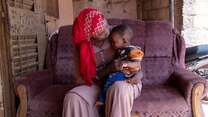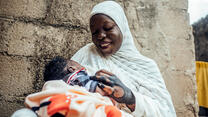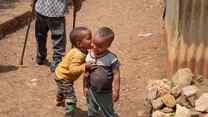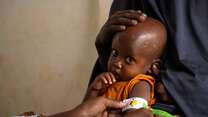In the past decade, the treatment of severe acute malnutrition (SAM) has dramatically shifted from an inpatient model of treatment to community management of acute malnutrition (CMAM) programs, where care is given to patients without complications on an outpatient basis through community centers. A number of studies have shown that outpatient therapeutic programs are more effective and cost effective than inpatient protocols, but most of these studies were undertaken in relatively stable low-income environments.
The International Rescue Committee (IRC), though, works in the most remote and fragile places in the world and seeks to understand how efficiently we can treat children with SAM in such extreme environments. Moreover, as the organization looks to expanding treatment for SAM in places that are too isolated or sparsely settled to access treatment centers, it is important to understand what factors drive the cost efficiency of outpatient-based CMAM programs.
The IRC’s Best Use of Resources initiative team analyzed eight CMAM programs, looking at how variations in program features, as well as differences in the contexts in which these programs were run, impacted their cost efficiency. In each program, the IRC supported local Ministry of Health-affiliated clinics by providing management, staff, and supplies to existing health centers, nutritional therapeutic programs, and mobile health teams. These approaches enable the community-managed model of SAM treatment and offer more intensive inpatient care for the small proportion of children that require hospitalization. As more intensive inpatient care is a necessary component of CMAM, the costs of making inpatient care available for the most malnourished children are included in this analysis.
- The IRC’s SAM programs cost between $100 and $500 dollars per child treated. The average cost per child treated was $235, excluding the shared costs of country office management, and $300 when said costs were included.
- Among these center-based programs, cost efficiency is largely determined by contextual factors, suggesting that where a program is implemented causes greater differences in cost efficiency than how a program is implemented in a particular context. The two major features driving cost efficiency in this analysis are the density of children in need of treatment in a health center’s catchment area and the capacity of the national health system.
- Understanding the ‘scale’ of a center-based nutrition program is complex, since the number of children reached depends on the population in the given area, the local malnutrition rate, and the treatment coverage rate—but two of these factors are determined by time and place. It is important to focus on maximizing the number of children reached at existing centers by increasing coverage rates, since the costs of running CMAM programs scale with the number of centers operated. At the same time, some contexts will not be able to operate as cost-efficiently due to low population density or low SAM prevalence, and the cost efficiency of a CMAM program in a particular place may actually fall over time as it successfully brings down malnutrition rates.
- Taken together, the results suggest that malnutrition treatment programs should be assessed relative to their potential cost efficiency if they achieved target coverage in that context, rather than comparing them to an absolute benchmark based on data from many countries. In absolute terms, the CMAM program in Niger cost approximately $100 per child treated, while the programs in Mali cost between $100 and $300 per child treated. Since the malnutrition rate in Niger was much higher than in neighboring Mali, that program had the potential to reach more children, and be even more cost efficient, if it achieved higher coverage rates.



